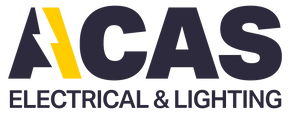TV Aerial Socket Installation
Installing a TV aerial socket is one of the more straightforward electrical tasks you can do around the home. It’s relatively safe to do, as there’s no electric current running through it (or to be more precise, a tiny current). Also, it’s pretty straightforward to connect the socket to the cable.
Here, we’ll be looking at how to install the socket and connect it to your aerial.
What is a TV aerial socket?
In the UK, a TV aerial socket is designed to take a coaxial cable, which connects your aerial to your TV, set top box or recording device. Even in these digital times, when we get much of our on-demand and live-broadcast TV over the internet, TV aerials remain in place to get both analogue and digital broadcast signals. You’ll find at least one coaxial socket on the back of set top boxes and recorders, and there’s also usually an output socket too, which you connect to the TV. This is how you can record TV shows that you aren’t watching.
The type of cable used is called coaxial cable, or coax. It usually consists of a solid copper core down the middle, then a layer of insulation, which is itself wrapped in a copper braid, forming the electrical shield. Finally, there’s another layer of insulation to protect the whole cable.
“Coaxial” simply means sharing an axis, rather like an archery target. Most cables have multiple wires running alongside each other in parallel, or twisted around each other, but coaxial cables have one inside the other.
Safety considerations
While a coaxial socket isn’t connected to the mains, it should always be treated with caution when you’re working on it. One risk is that the cable has somehow come into contact with live electrical wiring, for example where the insulation has been damaged, or where it has wrongly been connected to a circuit. Although rare, it’s always worth performing a quick voltage check on an existing socket before working on it.
A second, and very real, risk comes from lightning. As an aerial is probably the highest point on a building, it is very likely to be struck if there’s a storm overhead. Never work on a TV aerial during such weather.
Replacing a socket
Replacing a socket is a five-minute job. Simply unplug the aerial cable that leads to your TV, remove the faceplate of the socket with a screwdriver, and take a note of how the coaxial cable is connected. Then, you can unscrew the terminal connector and gripping mechanism, pull the cable free and discard the old faceplate.
To install the new plate, reverse the sequence – attach the copper centre core to the terminal on the back of the faceplate, and tighten the grip so it holds the braiding in place and connects it. Now, you can reattach the faceplate to the back box.
If you want to connect both satellite and traditional TV aerials, you can save space and have a more aesthetic result by using a dual socket, which lets you plug both systems to a TV setup.
Extending a cable
If you want to extend the cable so you can plug a TV in in another room, it’s a more involved process. The easiest way to do it is to simply buy an extension coaxial cable, which plugs into the existing socket, and has another socket at the other end. You can get these with 90 degree plugs, so they emerge unobtrusively from the socket, to be run along skirting boards, along walls or below floorboards.
If you want a more permanent solution, you’ll have to install a new backbox or pattress at the desired location, and take the cable through the wall. That may well mean removing and replacing plaster, drilling through masonry and redecorating, so it’s not a job that should be considered lightly. However, if you’re doing a full renovation and you’re working with an empty property, it might be worth considering, especially if you’re extending plug sockets and lighting too.
You can buy coax connectors, which join two coaxial cables together, and hide the connection behind the wall or skirting board. That way, you don’t need a completely new cable from the aerial. Connect the new length of cable to one side of the connector, attach the other side to the existing cable, and you’re good to go.
Running a new cable from the aerial
If you’re installing a complete new aerial cable, it’s probably time to call in professional aerial fitters. This job necessitates getting up on the roof, which comes with its own risks, so you’ll want it to be right first time.
In essence, you’re connecting the end of the cable to the aerial, then running the cable down to where you want the sockets to be. Sometimes, the cable can simply lie on top of the roof, but for a neater job, it can run through the loft.
The advantage of taking it down the roof is that it will involve less upheaval to reach the ground floor – simply drill a hole through the wall or a window frame, and take the cable in that way, and seal it up.
If you go through the loft, you’ll probably be lifting floorboards as well as drilling through masonry, so again, it’s OK if it’s an empty house, but quite disruptive if the rooms are occupied.
Ready to start? You’ll find all our coaxial TV sockets in our switches and sockets collection, or just look for “coaxial” using the search function.
